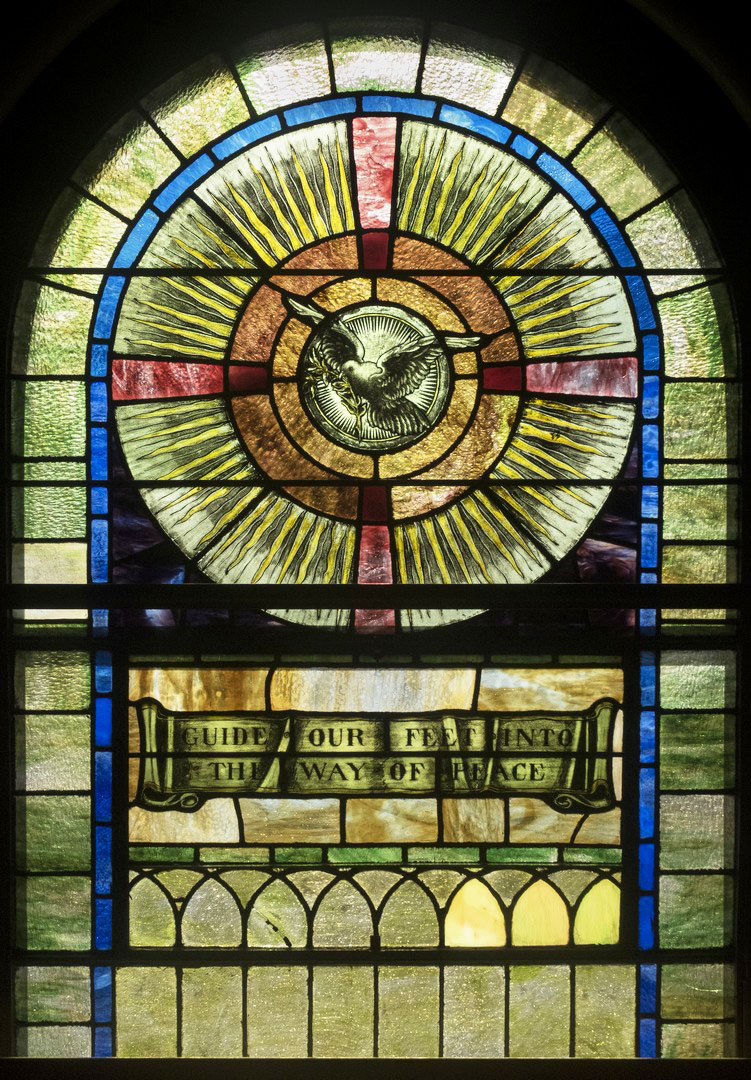 Subject:
Subject:
Inscription: “Guide Our Feet Into The Way of Peace”
Donor: Wellington and Victoria Stevens Wallace
Maker/Date: Charles Hogeman, 1908
The verse derives from Luke 1:76-80, part of the prophecy of the coming of Jesus:
"And you, child, will be called prophet of the Most High, for you will go before the Lord to prepare his ways, to give his people knowledge of salvation through the forgiveness of their sins,because of the tender mercy of our God by which the daybreak from on high will visit us to shine on those who sit in darkness and death’s shadow, to guide our feet into the path of peace. The child grew and became strong in spirit, and he was in the desert until the day of his manifestation to Israel."
Techniques -The Wallace windows use similar glass around a center symbols arranged in five rows of stone with the central theme in the middle. Surrounding the symbol are two concentric circles of stones. Within each row are different shapes of glass. The effect is traditional without any special treatment of the glass or painting.
The now ubiquitous peace symbol of a dove and olive branch has an unusual history. Though it was initially used by Christians, it is derived from a number of sources. The Biblical story of Noah and the Flood tells of a dove returning to the Arc with a freshly plucked olive leaf. The leaf reveals proof of land, the end of the flood, and for Christians the parallel of baptism. In this context the symbol did not, however, specifically carry the connection of peace.
Christians apparently derived the dove and olive branch as a symbol of peace from two sources. In the New Testament, the Spirit of God that descended upon Jesus during his baptism is compared to a dove. In early Christian art the dove is often used to represent the peace of the soul.
The use of the olive branch, on the other hand, dates back to ancient Greece, five centuries before Christ. Irene, the goddess of peace, was said to be very fond of the olive. To the ancient Greeks the olive tree represented abundance and was also believed to be able drive away evil spirits.
In the 5th century, by which time a dove with an olive branch had become established as a Christian symbol of peace, St Augustine wrote in On Christian Doctrine that, “perpetual peace is indicated by the olive branch (oleae ramusculo) which the dove brought with it when it returned to the ark.”
In more modern times, it is not until 1949, when Picasso created the poster for the World Peace Congress that the symbol regained prominence as the great symbol of peace.